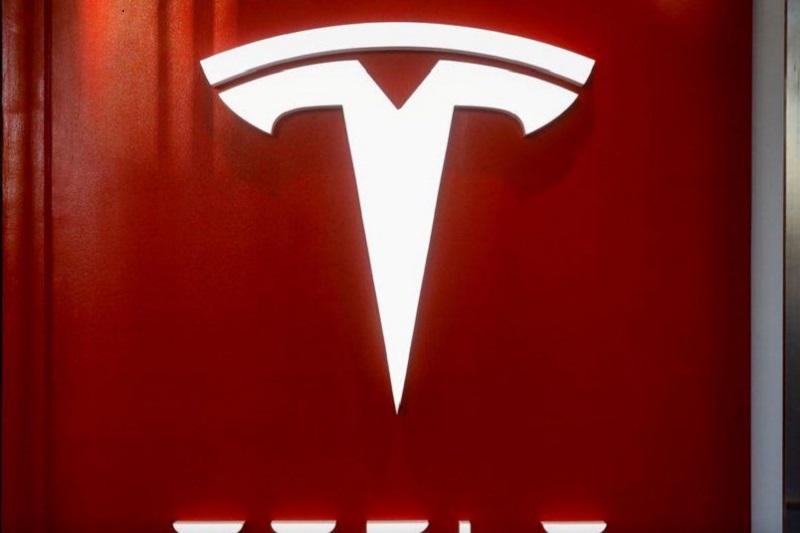Stock Story -
Electric vehicle pioneer Tesla (NASDAQ:TSLA) missed Wall Street’s revenue expectations in Q3 CY2024, but sales rose 7.8% year on year to $25.18 billion. Its non-GAAP profit of $0.72 per share was 19.8% above analysts’ consensus estimates.
Is now the time to buy Tesla? Find out by reading the original article on StockStory, it’s free.
Tesla (TSLA) Q3 CY2024 Highlights:
- Revenue: $25.18 billion vs analyst estimates of $25.5 billion (1.2% miss)
- Operating Profit (GAAP): $2.72 billion vs analyst estimates of $1.87 billion (45.2% beat)
- EPS (non-GAAP): $0.72 vs analyst estimates of $0.60 (19.8% beat)
- Gross Margin: 19.8%, up from 17.9% in the same quarter last year
- Operating Margin: 10.8%, up from 7.6% in the same quarter last year
- Free Cash Flow Margin: 10.9%, up from 3.6% in the same quarter last year
- Market Capitalization: $792 billion
Automobile Manufacturers
Much capital investment and technical know-how are needed to manufacture functional, safe, and aesthetically pleasing automobiles for the mass market. Barriers to entry are therefore high, and auto manufacturers with economies of scale can boast strong economic moats. However, this doesn’t insulate them from new entrants, as electric vehicles (EVs) have entered the market and are upending it. This has forced established manufacturers to not only contend with emerging EV-first competitors but also decide how much they want to invest in these disruptive technologies, which will likely cannibalize their legacy offerings.Sales Growth
A company’s long-term performance is an indicator of its overall business quality. While any business can experience short-term success, top-performing ones enjoy sustained growth for multiple years. Over the last five years, Tesla grew its sales at an incredible 31.8% compounded annual growth rate. This is a useful starting point for our analysis.Long-term growth is the most important, but within industrials, a half-decade historical view may miss new industry trends or demand cycles. Tesla’s annualized revenue growth of 13.9% over the last two years is below its five-year trend, but we still think the results were good and suggest demand was strong.
This quarter, Tesla’s revenue grew 7.8% year on year to $25.18 billion, missing Wall Street’s estimates.
Looking ahead, sell-side analysts expect revenue to grow 15% over the next 12 months, an improvement versus the last two years. This projection is commendable and shows the market thinks its newer products and services will catalyze higher growth rates.
Operating Margin
Operating margin is a key measure of profitability. Think of it as net income–the bottom line–excluding the impact of taxes and interest on debt, which are less connected to business fundamentals.Segments aside, Tesla’s consolidated gross margin averaged 21.4% over the last five years, a tough starting point for operating profits. Its average operating margin of 10.8% at that time was uninspiring for a scaled industrials business but surprisingly good when considering its unit economics and industry structure.
On the bright side, Tesla’s annual operating margin rose by 1.5 percentage points over the last five years, as its sales growth gave it operating leverage.
This quarter, Tesla generated an operating profit margin of 10.8%, up 3.2 percentage points year on year. The increase was encouraging, and since its operating margin rose more than its gross margin, we can infer it was recently more efficient with expenses such as marketing, R&D, and administrative overhead.
Earnings Per Share
We track the long-term change in earnings per share (EPS) for the same reason as long-term revenue growth. Compared to revenue, however, EPS highlights whether a company’s growth was profitable.Tesla’s full-year EPS flipped from negative to positive over the last five years. This is encouraging and shows it’s at a critical moment in its life.
Like with revenue, we analyze EPS over a more recent period because it can give insight into an emerging theme or development for the business. Sadly for Tesla, its EPS declined by 19.6% annually over the last two years while its revenue grew 13.9%. This tells us the company became less profitable on a per-share basis as it expanded. Diving into the nuances of Tesla’s earnings can give us a better understanding of its performance. While we mentioned earlier that Tesla’s operating margin improved this quarter, a two-year view shows its margin has declined 6.4 percentage points. This was the most relevant factor (aside from the revenue impact) behind its lower earnings; taxes and interest expenses can also affect EPS but don’t tell us as much about a company’s fundamentals.
In Q3, Tesla reported EPS at $0.72, up from $0.66 in the same quarter last year. This print easily cleared analysts’ estimates, and shareholders should be content with the results. Over the next 12 months, Wall Street expects Tesla’s full-year EPS of $2.40 to grow by 22.6%.
Key Takeaways from Tesla’s Q3 Results
We were impressed by how significantly Tesla beat analysts’ gross margin expectations this quarter (19.8% vs 16.9%). That helped it beat on adjusted earnings per share, Adjusted EBITDA, and Free Cash Flow.Additionally, Tesla saw vehicle delivery growth of 6.4% quarter on quarter, the first time this year the company has seen quarter on quarter delivery growth. Investors also reacted positively to the news of Tesla’s cheaper electric vehicle, which is on track to begin production next year. Revenue did miss coming in at 25.18 billion vs the expectation of 25.4 billion. However, this was heavily outweighed by the positive results. The stock traded up 18.8% to $253.76 immediately after reporting.
